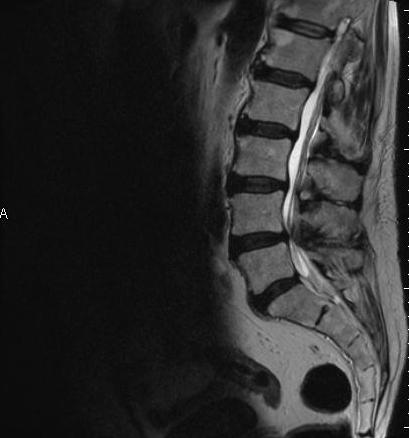The spinal stenosis describes a narrowing of the spinal canal. It occurs most often in older people in the lumbar spine. The most frequently affected segments are between 3 and 4 and fourth and 5 And 5. lumbar verterbrae body and 1 sacral vertebrae body
With the upright posture of humans, the lower lumbar spine is mechanically loaded high. Degenerative changes are age-and wide-spread on load and light forms. It is not so much the question of whether they develop, but more the question of how quickly the narrowing progresses, and whether it causes clinical symptoms.
As part of the normal aging process, intervertebral discs lose height and it comes to intervertebral osteochondrosis: firstly to the intervertebral disc protrusions, on the other bony extractions of the vertebral bodies (osteophytes). Next create osteoarthritis of the facet joints arc (spondylarthritis). This combination creates an hourglass-shaped narrowing of the spinal canal.
The stenosis may have different shapes. Occasionally, a relatively intact in the spinal disc space between shifts and "slips" to the side. This makes the spinal canal from one side and pressed it comes to more obvious symptoms. Clinical features and diagnosis
 The clinical findings are uncharacteristic first. Dysfunction and pain or irritation of the sciatic nerve can be caused by very different pathological changes of the lumbar spine. Typical of the spinal stenosis is the symptom of spinal claudication. The patient complains of pain to pull the front or back of the legs, a short distance when he is gone. The pain is better when he sits down or prevents the upper body. This relieving posture already give a first indication. They are so taken that the spinal canal through the bend is relatively further and reduces the irritation of the nerve structures. If the patients in extreme cases only be able to go less than 100 m, further diagnosis and treatment are necessary. The normal X-ray diagnostics is already a first indication that may be proven by MRI examination.
The clinical findings are uncharacteristic first. Dysfunction and pain or irritation of the sciatic nerve can be caused by very different pathological changes of the lumbar spine. Typical of the spinal stenosis is the symptom of spinal claudication. The patient complains of pain to pull the front or back of the legs, a short distance when he is gone. The pain is better when he sits down or prevents the upper body. This relieving posture already give a first indication. They are so taken that the spinal canal through the bend is relatively further and reduces the irritation of the nerve structures. If the patients in extreme cases only be able to go less than 100 m, further diagnosis and treatment are necessary. The normal X-ray diagnostics is already a first indication that may be proven by MRI examination.
The stenosis is progressive and often progresses at different rates. After several years, but there is usually no more deterioration. Neurological deficits are rare

